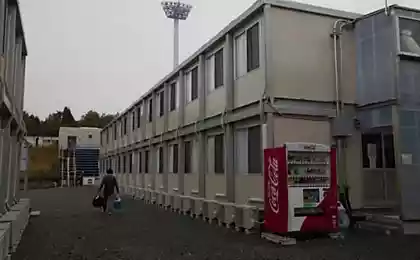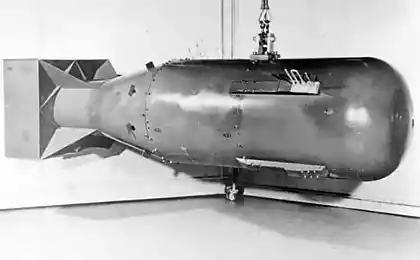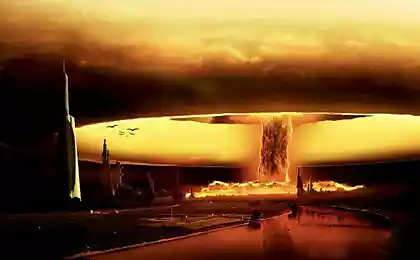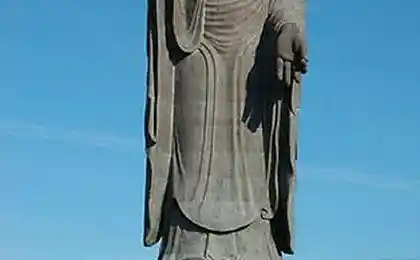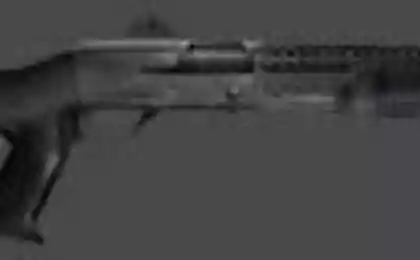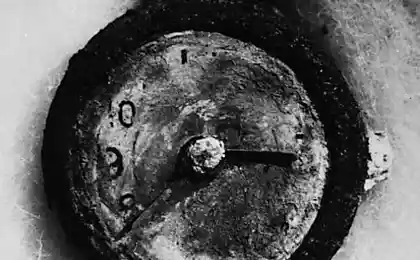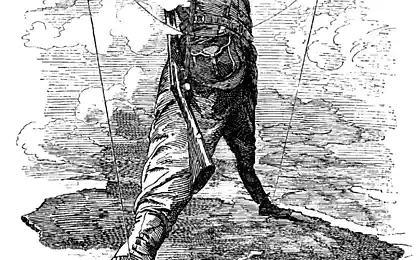1799
Japan 50s
Interesting archival photographs of Japan 50s

The girl carefully sorts pearls grown by Kokichi Mikimoto on the farm, on the peninsula of Ise, 12 October 1949. At this stage, the pearls are sorted according to color, size and shape. (Photo by AP Photo via The Atlantic)

Bombers B-26 ready to take off from the airfield of the Far East in Japan September 20, 1950 on combat missions in Korea. Twin-engine bombers provide round the clock support to ground forces of the United Nations. (Photo by AP Photo / US Air Force via The Atlantic)

Dining in an orphanage in Osaka February 19, 1951. Every day there were fed 160 orphans. Food bought at the expense of the 27th Infantry Regiment of the US Army. (Photo by Jim Pringle / AP Photo via The Atlantic)
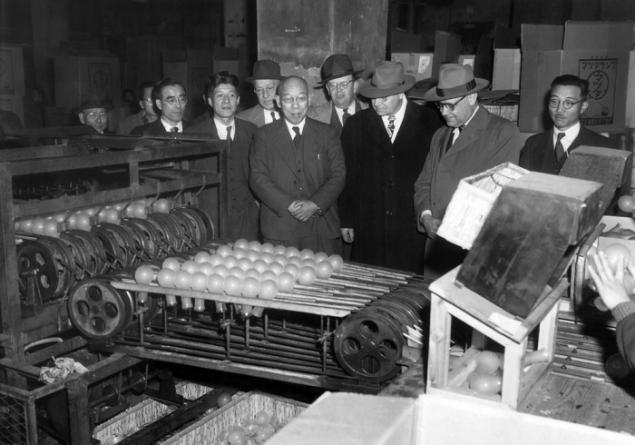
Experts in apprenticeship training watch as the unit resets the bulb down to another section of the plant where they are sorted by hand, in Tokyo January 25, 1951. (Photo by Arthur Curlis / AP Photo / US Army via The Atlantic)
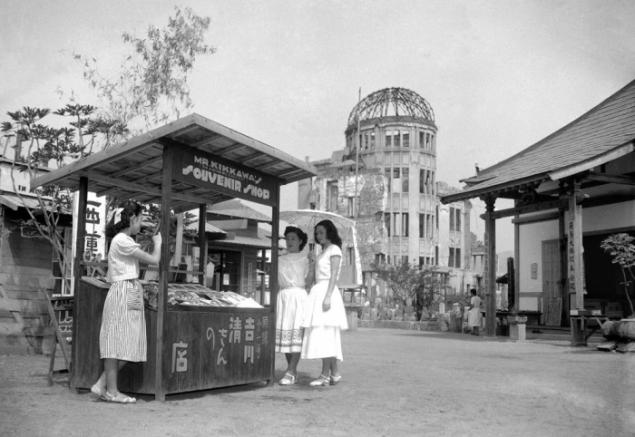
August 3, 1951, six years after the explosion of the atomic bomb in Hiroshima, girls stand near the souvenir shop on the street next to the destroyed dome Industrial hall. Shopkeeper Kiyoshi Yoshikawa, injured in the explosion. (Photo by AP Photo / Kyodo via The Atlantic)
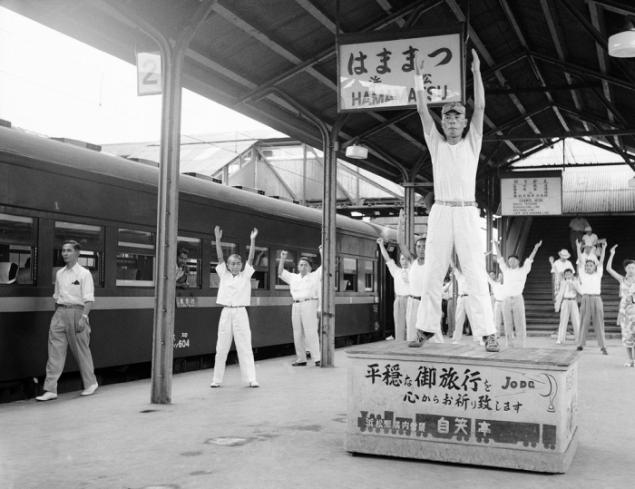
Pelham Tokyo-Osaka during the three-minute exercises under the supervision of an instructor in Hamamatsu August 27, 1952, where the train stopped for 5 minutes. This unusual service was organized to help passengers to stretch their legs during the long journey between the two cities. At the station even had a platform for instructors and music. (Photo by Max Desfor / AP Photo via The Atlantic)
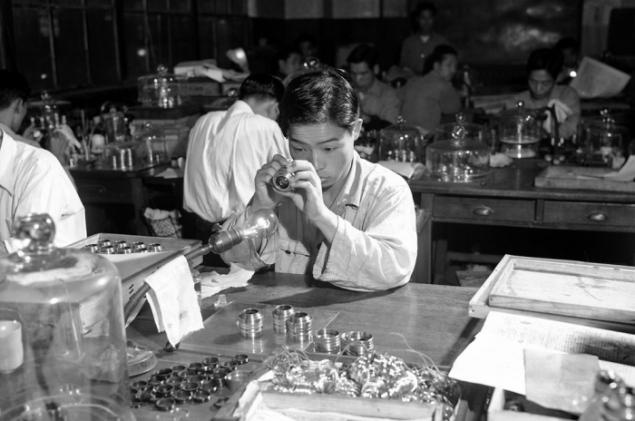
Examination of the lens at the Tokyo plant for the production of digital cameras January 5, 1952. (Photo by Bob Schutz / AP Photo via The Atlantic)
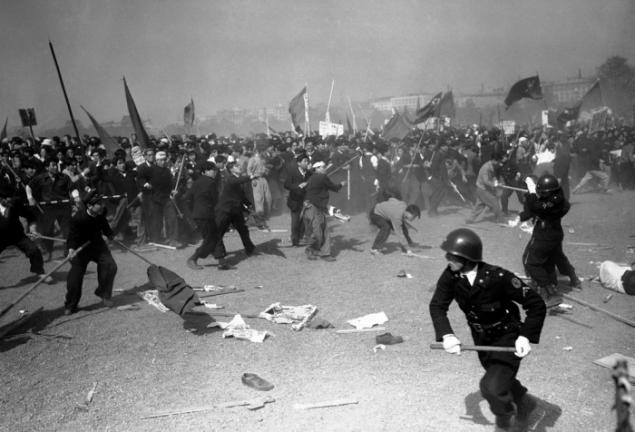
Demonstrators clash Communists and the Japanese police in central Tokyo, May 1, 1952. There were many victims on both sides: the police used tear gas and batons. (Photo by Max Desfor / AP Photo via The Atlantic)
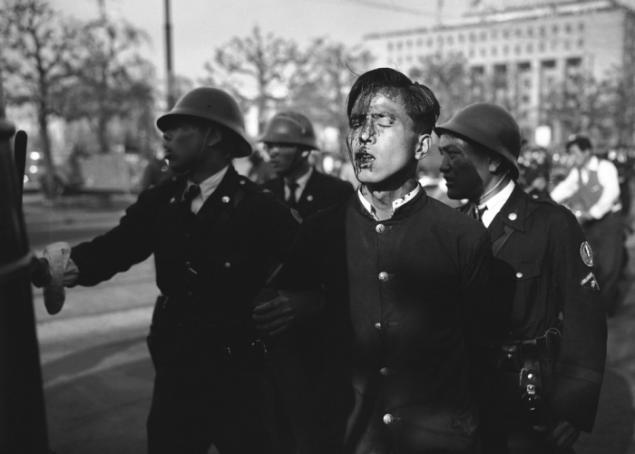
(Photo by AP Photo via The Atlantic)
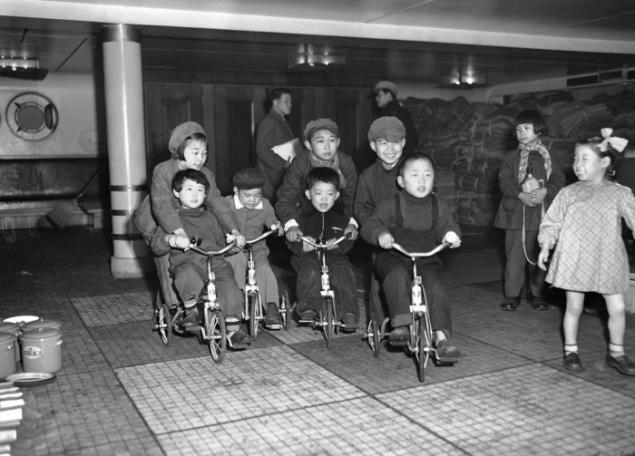
Children of Japanese families returning home to play on the deck Koan Maar while traveling in the Gulf Maitsuru March 24, 1953. The first group of families returned from Communist China, where they were at the end of the Second World War. Only by 1953 the ninth year they were finally allowed to go home. The first group of 2,000 people arrived from North China to Koan Maariv. Bicycles children presented charities. (Photo by Y. Jackson Ishizaki / AP Photo via The Atlantic)
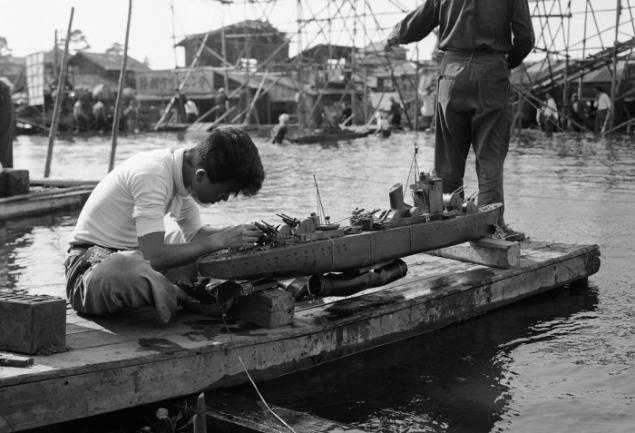
An employee working on the studio of one of the model ship before filming a documentary about the warship Yamato June 8, 1953. (Photo by Yuichi Ishizaki / AP Photo via The Atlantic)
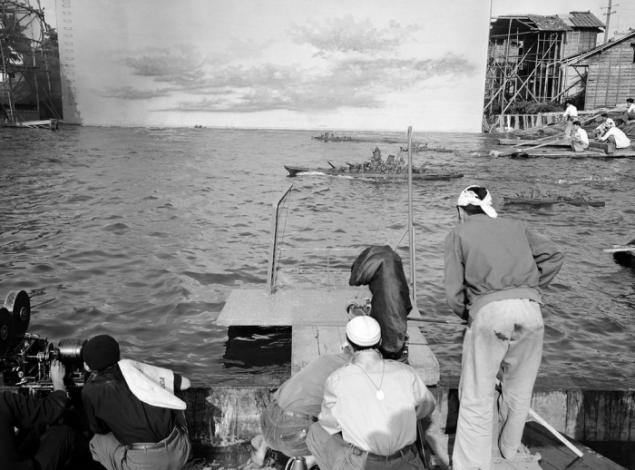
Filming of "Yamato" in the studio pool Japanese film company Shin-Toho June 8, 1953. (Photo by Yuichi Ishizaki / AP Photo via The Atlantic)

The last day of filming the documentary "Yamato". (Photo by Yuichi Ishizaki / AP Photo via The Atlantic)
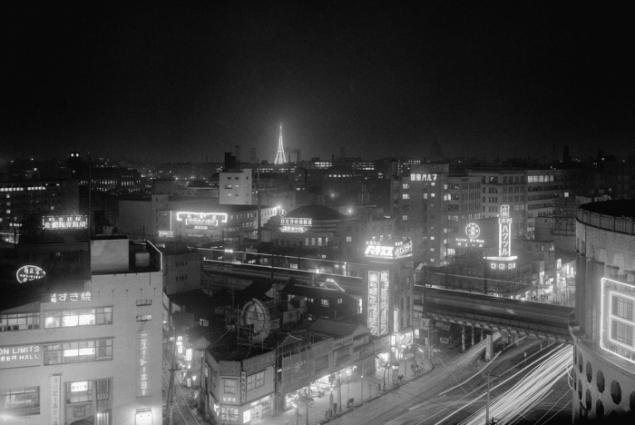
Ten thousand lights illuminate the new TV station tower in the center of Tokyo March 26, 1955 during a large-scale image of the flash in the world. Radio Tokyo, together with a local company for the production of light bulbs to decorate the new 157-meter television antenna 10,000 light bulbs as a promotion for the opening of the channel on 1 April. Thousands of photographers gathered on the upper floors and roofs of adjacent buildings to capture the event. (Photo by AP Photo via The Atlantic)
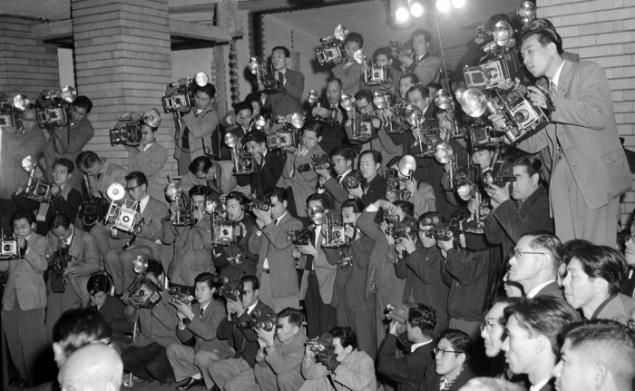
45 operators and journalists take pictures of the new cabinet of Japanese Prime Minister in the center of Tokyo December 17, 1954. Typically, Japanese newspapers were sent to reports 3-4 photographer to capture the event from all possible angles. (Photo by AP Photo via The Atlantic)
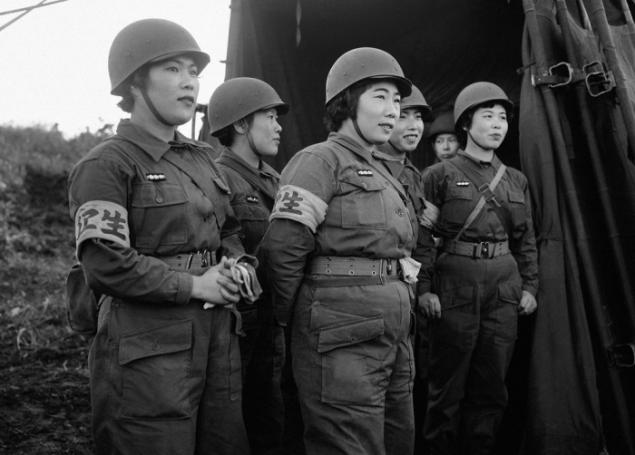
Nurses newly formed self-defense forces in Hokkaido during maneuvers October 20, 1955. Japanese forces entered the military exercises against an imaginary opponent. (Photo by AP Photo via The Atlantic)

Tokyo from a height of 5 August 1955. Modern buildings gradually filled areas of the city. Sumida River flows peacefully through the quarter hamachi (foreground) and the District of Fukavaga. Most of these areas occupy warehouses. (Photo by AP Photo via The Atlantic)
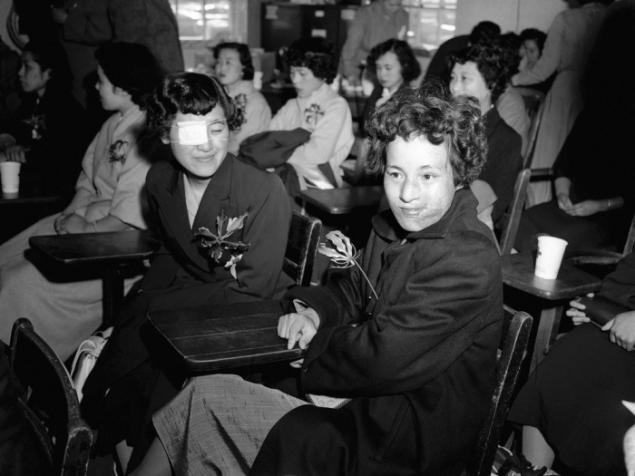
Japanese women Mitsuko Kuranoto (left) and Emiko Takemoto survivors of a nuclear attack on Hiroshima 10 years ago, sitting on a military base in Long Island, New York, May 9, 1955. 25 Japanese women who have suffered in the explosion, arrived in New York in the hope to have plastic surgery. (Photo by Jacob Harris / AP Photo via The Atlantic)

Huge copy atomic "fungus" carry on the streets of Tokyo May 1, 1957 to protest against the atomic bomb tests at Christmas Island. (Photo by AP Photo via The Atlantic)
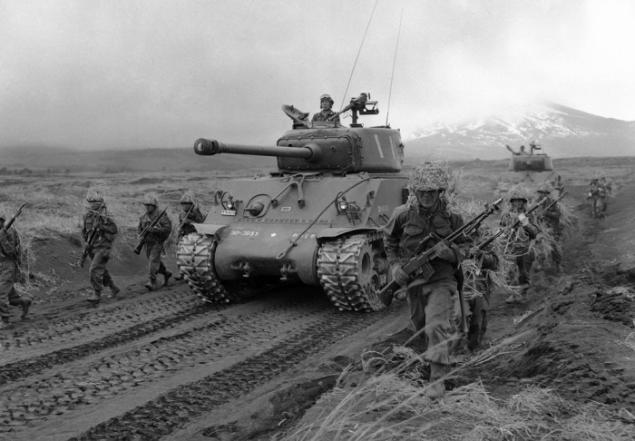
Volunteers of the Japanese army during maneuvers at the military school Fuji May 15, 1957 in Tokyo. Armed with American weapons and supported by US tanks and soldiers took part in intense military exercises on land, at sea and in the air. (Photo by George Sweers / AP Photo via The Atlantic)

Japanese dancer troupe Shochiku rehearsing one of his rooms in summer school Kokusai Theater in Tokyo July 11, 1958. (Photo by Mitsunori Chigita / AP Photo via The Atlantic)
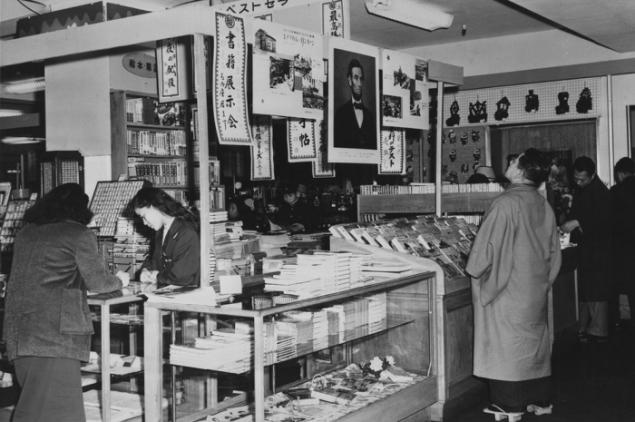
Tokyo department store in 1959, where traditional Japanese wooden sandals considers portrait of Abraham Lincoln. (Photo by Library of Congress via The Atlantic)
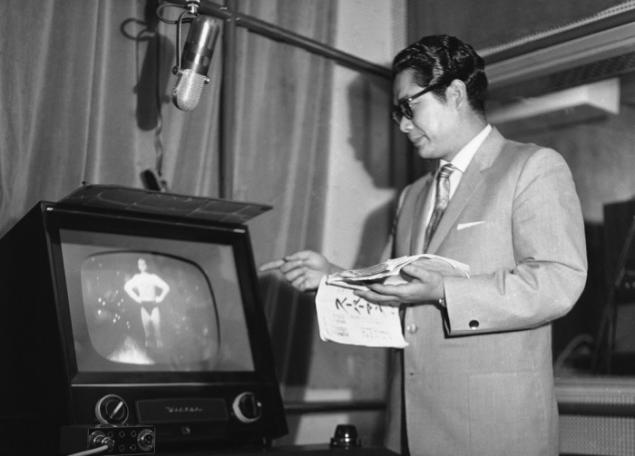
Tour Ohira, a Japanese "voice" Superman looks at actor George Reeves on the screen during dubbing the series 7 July 1959. Television made a huge impression on the Japanese. In the 50s about 99% of Japanese television was given by the American show, and "Superman" - one of the most beloved. (Photo by AP Photo via The Atlantic)
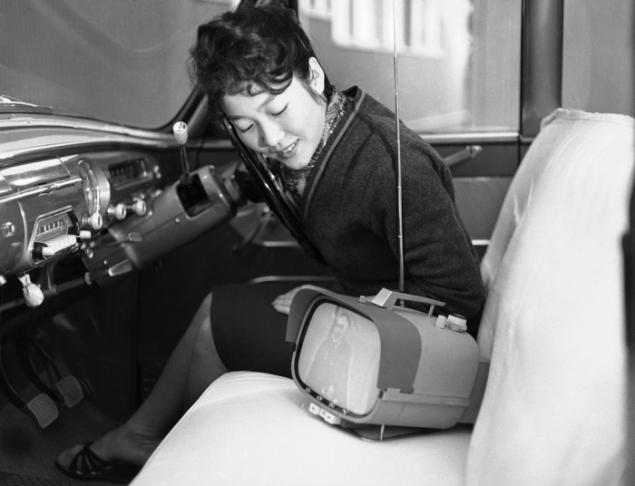
Tomiko Kawabata in his car, admiring his brand new transistor portable TV, which began producing company Sony. The picture was taken in Tokyo January 5, 1960. In an 8-inch TV screen (20 cm), it is powered by batteries, which last for three hours, and from the usual outlets. (Photo by AP Photo via The Atlantic)
©

The girl carefully sorts pearls grown by Kokichi Mikimoto on the farm, on the peninsula of Ise, 12 October 1949. At this stage, the pearls are sorted according to color, size and shape. (Photo by AP Photo via The Atlantic)

Bombers B-26 ready to take off from the airfield of the Far East in Japan September 20, 1950 on combat missions in Korea. Twin-engine bombers provide round the clock support to ground forces of the United Nations. (Photo by AP Photo / US Air Force via The Atlantic)

Dining in an orphanage in Osaka February 19, 1951. Every day there were fed 160 orphans. Food bought at the expense of the 27th Infantry Regiment of the US Army. (Photo by Jim Pringle / AP Photo via The Atlantic)

Experts in apprenticeship training watch as the unit resets the bulb down to another section of the plant where they are sorted by hand, in Tokyo January 25, 1951. (Photo by Arthur Curlis / AP Photo / US Army via The Atlantic)

August 3, 1951, six years after the explosion of the atomic bomb in Hiroshima, girls stand near the souvenir shop on the street next to the destroyed dome Industrial hall. Shopkeeper Kiyoshi Yoshikawa, injured in the explosion. (Photo by AP Photo / Kyodo via The Atlantic)

Pelham Tokyo-Osaka during the three-minute exercises under the supervision of an instructor in Hamamatsu August 27, 1952, where the train stopped for 5 minutes. This unusual service was organized to help passengers to stretch their legs during the long journey between the two cities. At the station even had a platform for instructors and music. (Photo by Max Desfor / AP Photo via The Atlantic)

Examination of the lens at the Tokyo plant for the production of digital cameras January 5, 1952. (Photo by Bob Schutz / AP Photo via The Atlantic)

Demonstrators clash Communists and the Japanese police in central Tokyo, May 1, 1952. There were many victims on both sides: the police used tear gas and batons. (Photo by Max Desfor / AP Photo via The Atlantic)

(Photo by AP Photo via The Atlantic)

Children of Japanese families returning home to play on the deck Koan Maar while traveling in the Gulf Maitsuru March 24, 1953. The first group of families returned from Communist China, where they were at the end of the Second World War. Only by 1953 the ninth year they were finally allowed to go home. The first group of 2,000 people arrived from North China to Koan Maariv. Bicycles children presented charities. (Photo by Y. Jackson Ishizaki / AP Photo via The Atlantic)

An employee working on the studio of one of the model ship before filming a documentary about the warship Yamato June 8, 1953. (Photo by Yuichi Ishizaki / AP Photo via The Atlantic)

Filming of "Yamato" in the studio pool Japanese film company Shin-Toho June 8, 1953. (Photo by Yuichi Ishizaki / AP Photo via The Atlantic)

The last day of filming the documentary "Yamato". (Photo by Yuichi Ishizaki / AP Photo via The Atlantic)

Ten thousand lights illuminate the new TV station tower in the center of Tokyo March 26, 1955 during a large-scale image of the flash in the world. Radio Tokyo, together with a local company for the production of light bulbs to decorate the new 157-meter television antenna 10,000 light bulbs as a promotion for the opening of the channel on 1 April. Thousands of photographers gathered on the upper floors and roofs of adjacent buildings to capture the event. (Photo by AP Photo via The Atlantic)

45 operators and journalists take pictures of the new cabinet of Japanese Prime Minister in the center of Tokyo December 17, 1954. Typically, Japanese newspapers were sent to reports 3-4 photographer to capture the event from all possible angles. (Photo by AP Photo via The Atlantic)

Nurses newly formed self-defense forces in Hokkaido during maneuvers October 20, 1955. Japanese forces entered the military exercises against an imaginary opponent. (Photo by AP Photo via The Atlantic)

Tokyo from a height of 5 August 1955. Modern buildings gradually filled areas of the city. Sumida River flows peacefully through the quarter hamachi (foreground) and the District of Fukavaga. Most of these areas occupy warehouses. (Photo by AP Photo via The Atlantic)

Japanese women Mitsuko Kuranoto (left) and Emiko Takemoto survivors of a nuclear attack on Hiroshima 10 years ago, sitting on a military base in Long Island, New York, May 9, 1955. 25 Japanese women who have suffered in the explosion, arrived in New York in the hope to have plastic surgery. (Photo by Jacob Harris / AP Photo via The Atlantic)

Huge copy atomic "fungus" carry on the streets of Tokyo May 1, 1957 to protest against the atomic bomb tests at Christmas Island. (Photo by AP Photo via The Atlantic)

Volunteers of the Japanese army during maneuvers at the military school Fuji May 15, 1957 in Tokyo. Armed with American weapons and supported by US tanks and soldiers took part in intense military exercises on land, at sea and in the air. (Photo by George Sweers / AP Photo via The Atlantic)

Japanese dancer troupe Shochiku rehearsing one of his rooms in summer school Kokusai Theater in Tokyo July 11, 1958. (Photo by Mitsunori Chigita / AP Photo via The Atlantic)

Tokyo department store in 1959, where traditional Japanese wooden sandals considers portrait of Abraham Lincoln. (Photo by Library of Congress via The Atlantic)

Tour Ohira, a Japanese "voice" Superman looks at actor George Reeves on the screen during dubbing the series 7 July 1959. Television made a huge impression on the Japanese. In the 50s about 99% of Japanese television was given by the American show, and "Superman" - one of the most beloved. (Photo by AP Photo via The Atlantic)

Tomiko Kawabata in his car, admiring his brand new transistor portable TV, which began producing company Sony. The picture was taken in Tokyo January 5, 1960. In an 8-inch TV screen (20 cm), it is powered by batteries, which last for three hours, and from the usual outlets. (Photo by AP Photo via The Atlantic)
©
